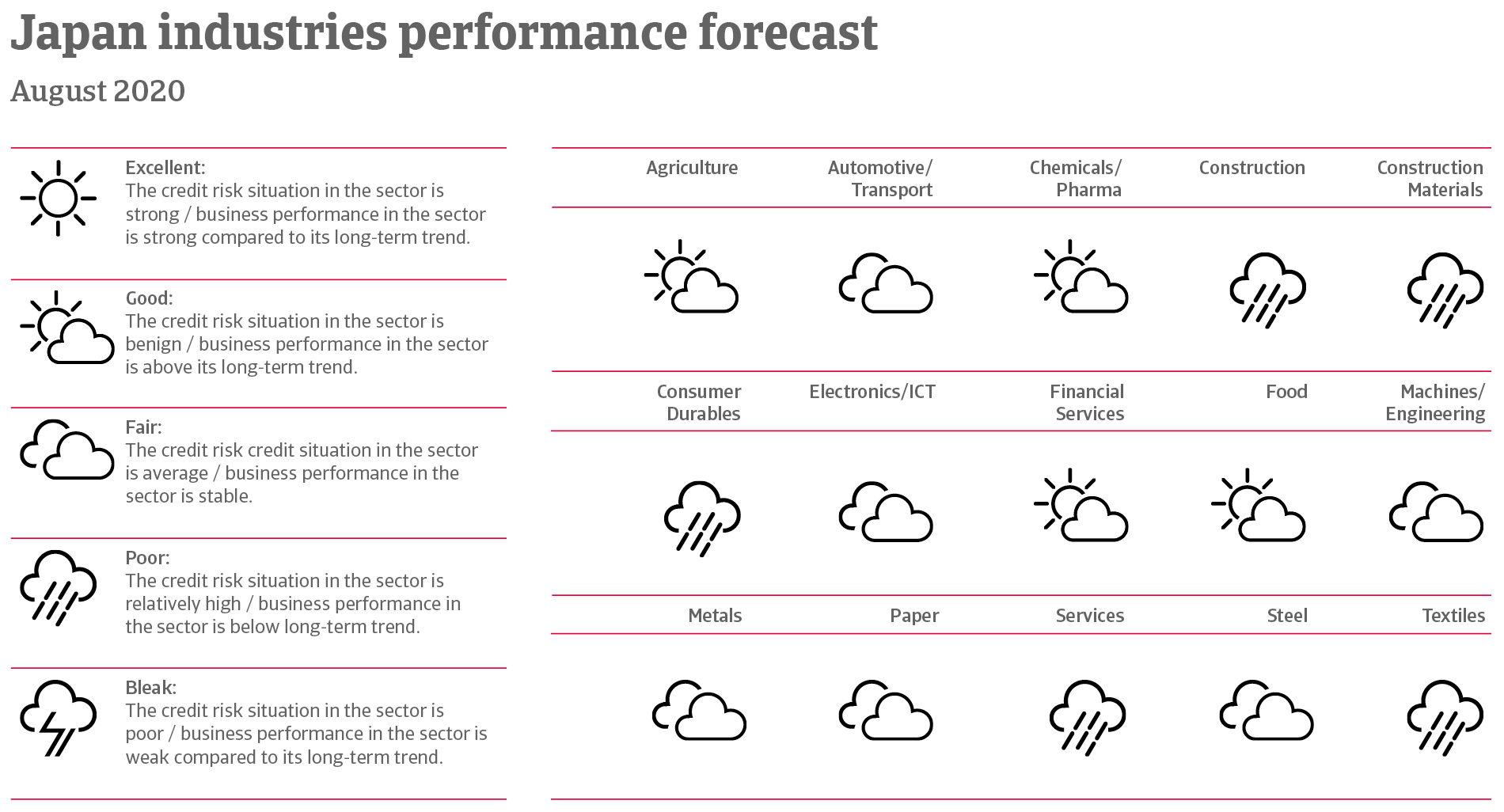The repercussions of coronavirus have hit an already weakening economy.

Economic situation
A severe disruption of economic activity due to the coronavirus pandemic
In 2020, GDP is expected to contract 6%, as government measures to contain the spread of the coronavirus severely impact domestic spending, while manufacturers and exporters suffer from the global recession and supply chain disruptions.
The repercussions of the coronavirus outbreak have hit the economy at a time it was already showing signs of weakness. Export growth slowed down in 2019 due to lower global trade and manufacturing expansion, less demand from China and the increased risk of protectionism. Amid slowdowns in China and other regional economies last year the yen has continued strengthening, weighing on the competitiveness of Japanese exports.
At the same time, an increase in the consumption tax rate from 8% to 10% in October 2019 immediately pushed up prices and lowered consumer spending. All this lead to a sharp contraction of the economy in Q4 of 2019, by 6.3% compared to the previous quarter.
Household consumption is expected to contract by almost 6% in 2020 due to measures to curb the coronavirus spread, wage freezes and rising unemployment. Retail sales are forecast to decrease more than 7% as sales of non-essential items have deteriorated.
Industrial production is forecast to contract more than 11%, as the pandemic has strained the recovery of the ICT sector, automotive manufacturers partially suspended production in early 2020, and domestic as well as foreign machinery demand is deteriorating. Exports are forecast to contract by more than 16% year-on-year in 2020, as demand from main trading partners in Asia (especially China) and the US is sharply declining.
The government has proposed a fiscal stimulus package of JPY 117 trillion (about 20% of GDP). The key measures comprise cash handouts to every individual and affected companies, deferral of tax payments and social security contributions, and concessional loans from public and private financial institutions.
The Bank of Japan has so far refrained from lowering the key interest rate, which has been at -0.1% since early 2016. To counter the negative shock from the pandemic, the Bank of Japan (BoJ) introduced a set of measures to provide liquidity and support credit flows. It is also increasing its asset purchases. Japan already holds a record JPY 512 trillion of central bank assets (93% of GDP), by far the largest of major advanced economies. Given the new asset purchase programme, the balance sheet will expand further in 2020.
Business insolvencies expected to increase sharply
Despite the comprehensive fiscal and monetary measures to support the economy, business insolvencies are forecast to increase 13% in 2020. Mainly affected are retail, transport and hospitality sectors, while export-oriented businesses will be strained by lower demand (especially from China), especially for ICT-related products.
Only a modest rebound in 2021
In 2021 a modest rebound in GDP growth of about 2.8% is forecast, as policy space is limited and uncertainty about economic prospects has increased markedly. Currently it is expected that domestic demand will start to recover in H2 of 2020 and exports will grow by mor than 9% in 2021. Public consumption and investments are likely to be prompted by the sizeable stimulus measures.
However, several downside risks remain. A larger and longer-lasting coronavirus pandemic could lead to persistently low consumer sentiment, more financial market volatility and an even deeper contraction of global growth. The effects of a further escalation of the Sino-US trade dispute and rising protectionism on the Asian supply chain would hit Japan hard.
Related Documents

630KB PDF
